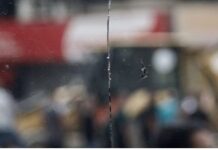Emma Graham-Harrison
The Observer / June 4, 2023
The head of a charity in the strip helping people traumatized by the conflict explains why he still has hope for the future.
Dr Yasser Abu Jamei is an unlikely optimist, a psychiatrist running the biggest mental health charity in Gaza, where four out of five children live with depression, fear and grief.
The 365 sq km (140 sq mile) Palestinian enclave on the Mediterranean – a tiny strip of land regularly bombed, heavily blockaded and desperately poor – has provided a grim laboratory for testing how repeated trauma affects the human mind.
In Gaza, “people do not have means to recover and people are not given the space to recover,” said Abu Jamei. He is on the frontline of the largely invisible battle to protect and heal the population, as head of the Gaza Community Mental Health Program (GCMHP).
Last year it served more than 4,400 people, above its maximum official capacity, but still just a fraction of those who might need its help.
“Of course, this is not a reflection of the need in Gaza Strip,” said Abu Jamei, who relies on donations to fund the centre’s work.
“The WHO [World Health Organization] says that in areas of conflict 10% of the population will develop moderate to severe mental health illness,” he said. Gaza has a population of more than 2 million, suggesting hundreds of thousands are suffering or are at risk.
The nonprofit organization supports the only psychotherapists and the only child psychiatrist in Gaza, as well as community outreach projects, including a sports program for some of the most vulnerable children.
Part of its work, particularly the sport, aims to help traumatized children find a path back to something like normal life.
Their journey is where Abu Jamei finds hope and the inspiration to keep going. “We try to bring colour into their lives,” he said. “We tell children that you can still laugh, that you can still have fun, that you can still just exhale, you know, get rid of the negative emotions.
“Of course, you cannot erase the memories that you have, but at least you can add more memories that will let the previous ones, the sad ones, go.”
The pain Abu Jamei’s patients grapple with is one he knows intimately; few families in Gaza are untouched by violence. In 2014, an Israeli missile killed 28 members of his extended family as they sat down for an iftar to break their Ramadan fast.
Most people in Gaza are not able to leave their small homes after 15 years of an intensifying Israeli blockade; residents and human rights activists call it “an open-air prison”.
There is nowhere to seek safety when Israel launches one of the military operations that have become a semi-regular feature of life since 2014. Israeli authorities say the military operations are necessary in self-defence, because Hamas targets Israeli citizens with rockets from the Gaza Strip.
“Given the small geographical area of Gaza Strip, and the high population density, almost all kids are exposed to trauma when attacks, large-scale operation military operations, happen,” Abu Jamei said.
Each operation compounds the traumas inflicted by previous attacks, and in recent years they have become more frequent. “It’s getting harder and harder with time, because the last three years, we had three consecutive attacks. In 2021, 2022, 2023.”
The impact of cycles of violence on children is showing in their deteriorating mental health. In 2015, UNICEF estimated that more than a quarter of Gaza’s children required psychosocial support as a result of past trauma. By 2022, Save the Children found that four out of five children were living with depression, grief and fear.
Poverty and the blockade entwine to throttle natural resilience, even though “we [humans] have a very strong capacity to overcome difficulties”, Abu Jamei said.
Building materials trickle in slowly through controlled borders, and extreme, widespread poverty means people cannot afford reconstruction. More than half of the population is below the poverty line, according to World Bank figures.
“Things that remind you of what happened are still in Gaza,” he said. “The restrictions on movement are still there. The drones that are in the skies are still there … the debris, wreckage, the destroyed places.
“We don’t have the resources to clear everything … kids go to school through streets that are partially destroyed, through buildings that are partially destroyed. These issues delay even natural healing processes.”
He keeps going as the outlook gets bleaker because of the positive impact the team see every day. The programs peer supervision “care for the caregivers”, allows them to support each other but also share success.
“You also hear how the team managed to change the life of a whole family because they started to understand why their child lost his capacity to study at school. You see the parents are overwhelmingly happy to see their children coming back, to start laughing again or to continue their lives.
“These are some joyful times but they are very emotional, you come to believe in your work more. You feel that you carry a mission, that you are supporting families supporting children, supporting the most needy ones.”
Their hard-won expertise means they are regularly asked for advice by colleagues in areas suffering intergenerational trauma, including northern Syria, although getting in and out of Gaza remains a major obstacle to this kind of collaboration.
GCMHP steers clear of politics, to keep focused on patients. But at a time when Israeli politics is moving further right, the Palestinian Authority is crippled by division and mismanagement, and the two-state solution seems dead in the water, need for its services is only likely to expand.
He tells the story of a psychologist who in 2014 headed to an area in the east of the Gaza Strip that had been regularly hit in the past and was targeted again that day. The anecdote shows both why his organization’s services are so vital – he recounted it to explain how he holds on to hope – and why the burden is only likely to get worse.
As the psychologist arrived, a teenage girl came running out to meet her, asking, “Where have you been, Miss Sabah? I have been waiting for you.”
The girl had been treated by Sabah in 2008, after her home was completely destroyed; now it had been damaged again, and she knew who could help her survive the pain.
“She is a survivor but the idea is that she was waiting for that psychologist to come back and see her again.”
Emma Graham-Harrison – Senior International Affairs Correspondent for The Guardian & The Observer












